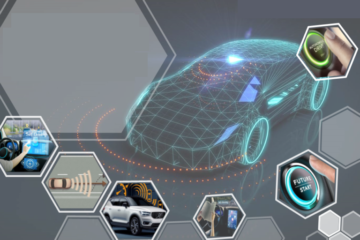Drawing Consistency in Design Patent
A design patent is the only form of legal protection granted to the ornamental design of a functional item. The ornamental appearance for an article includes its shape/configuration or surface ornamentation applied to the article or both.
The ornamental appearance of an item/article is illustrated by a line drawing which shows the different views of the item/article. Those design drawing comes to complex one then there is a big challenge in making figures with more consistent between the views.
The grant of a design patent in a different jurisdiction is based on the different drawing standards followed by those jurisdictions. Some of the basic standards for design drawings are views, margins, shading and order of views. These drawing standards are followed during filing of design patents in different jurisdictions but in all jurisdictions, the common thing that needs to follow is the views between the figures should clearly show the shape/configuration of an item/article. Because examiners will always look for the figures that should be more consistent between different views. Before granting the design patent, most of the office action comes due to the lack of consistency in figures. For avoiding office actions one should concentrate on drawing consistency in views of the figures. The common views needed for design drawings are perspective, front, back, left, right, top and bottom views.
USPTO – 37 CFR 1.152 Design drawings
When inconsistencies are found among the views, the examiner should object to the drawings and request that the views be made consistent. When the inconsistencies are of such magnitude that the overall appearance of the design is unclear, the claim should be rejected
WIPO – Rule 11.13(g)
Each element of each figure shall be in proper proportion to each of the other elements in the figure, except where the use of a different proportion is indispensable for the clarity of the figure.
EPO – Rule 46(f)
Elements of the same figure shall be proportional to one another unless a difference in proportion is indispensable for the clarity of the figure.
How to make drawings with more consistent:
For making drawings with more consistent, one should follow the three phases of analysis.
Phase I: Extraction of features and surface contours in an item/article
Phase II: Dimensional analysis of features and surface contours in an item/article
Phase III: Gridline formation of features and surface contours in an item/article
After completing the three phases, one should start to make the different views of the drawing.
Phase I: Extraction of features and surface contours in an item/article:
Features of an article are nothing but the contoured surfaces, protrusions, projections, holes, extended parts which is away from the plane/surface area of an item/article. One should extract those features clearly by analyzing the item/article.
For example, if we take the above flange as an item/article for a design patent. This flange has the following features/surface contours.
- Holes
- Triangular wedges
- Hollow protruded tube
These are protruded in/away from the plane/surface of an article/item. If we located these features/surface contours in an exact place in every view then the drawing consistency will not change. So the first phase analysis is mainly done for extraction of features and surface contours in an item/article. The misplacing of features/surface contours leads to inconsistent drawing views.
In the below figure, the left flange has consistent with the Fig. 1 but the right flange has inconsistent because one of the holes is misplaced from its position.
Phase II: Dimensional analysis of features and surface contours in an item/article:
The dimensions of features and surface contours are just a rough dimension. The precision of dimensions is not much more important but accuracy is more important.
The dimensions of features/surface contours are taken with respect to the plane area. One solution for taking dimensions is to draw a rough line for the length/breadth/width/dia/radius of the feature/surface contours which act as a reference. Each rough line represents the rough dimensions of each feature and surface contours. Those rough lines should be straight or curved.
Before going to make further views, the illustrator should take rough lines for the dimensions of features and surface contours. Those rough dimensions are finally used to check the consistency of drawings between the views and also used to make the drawings with more consistency.
In the below figure, the green lines indicate the rough lines for the dimensions of features and surface contours. Those rough lines can be used as reference dimensions during illustrating.
Phase III: Gridline formation of features and surface contours in an item/article:
For making consistent views of an item/article, construction of gridlines plays an important role. The gridlines are formed with respect to features and surface contours in an item/article. The below image represents the formation of gridlines with respect to holes, triangular wedges, and hollow protruded tube.
The yellow line represents the gridlines. The further views can be illustrated by using that gridline without deviating from the consistency. The below image shows the bottom and right view illustrated using the gridlines (yellow line) and reference dimensions (green line).
During illustration of further views, we can use the reference dimensions made from the PHASE II analysis to enhance the correct proportion/consistency of figures.
Advantages of the three phase analysis:
- Drawing views of an item/article are more consistent.
- Two or more views are illustrated from a single view.
- Reduces illustration time.
- Consistency of drawings is corrected during illustration.
- Easy to make complex drawings with more consistency.
- Missing of features/surface contours of an item/article is avoided.
- More accurate.












